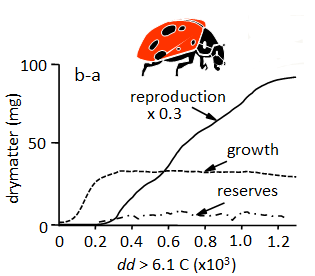Invasive species and climate change: the PBDM approach

Assessing the geographic distribution and abundance of invasive species is critical for developing sound management and/or eradication policies. Ecological niche modelling approaches (ENMs) that make implicit assumptions about biology and mathematics are commonly used to predict the potential distribution of invasive species based on their recorded distribution. An alternative approach is physiologically based demographic modelling (PBDM), which explicitly incorporates the mathematics and the observed biology, including trophic interactions, to predict the temporal phenology and dynamics of a species across wide geographic areas. The invasive weed, yellow starthistle (YST) (Centaurea solstitialis), and its interactions with annual grasses and herbivorous biological control agents is used to demonstrate the utility of the PBDM approach for analysing complex invasive species problems. The PBDM predicts the distribution and relative abundance of YST accurately across the western USA, and ...
